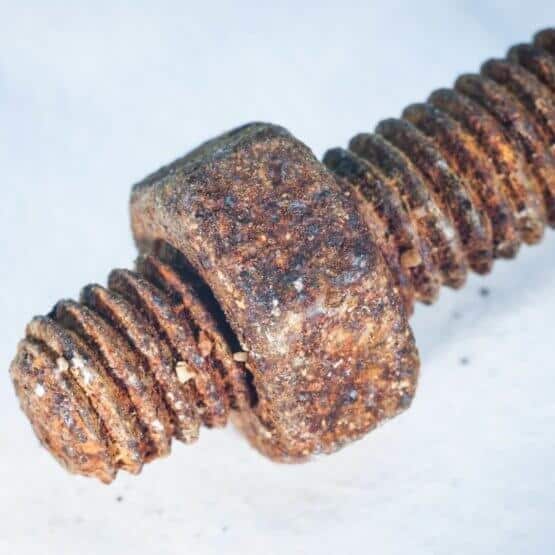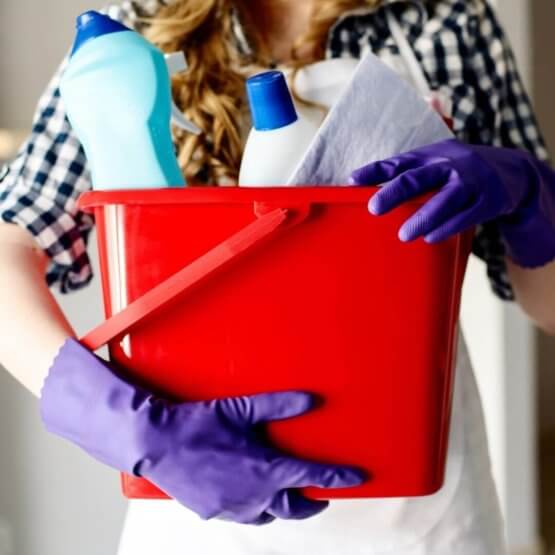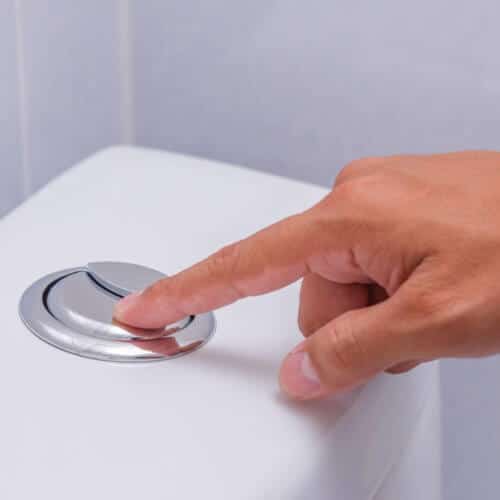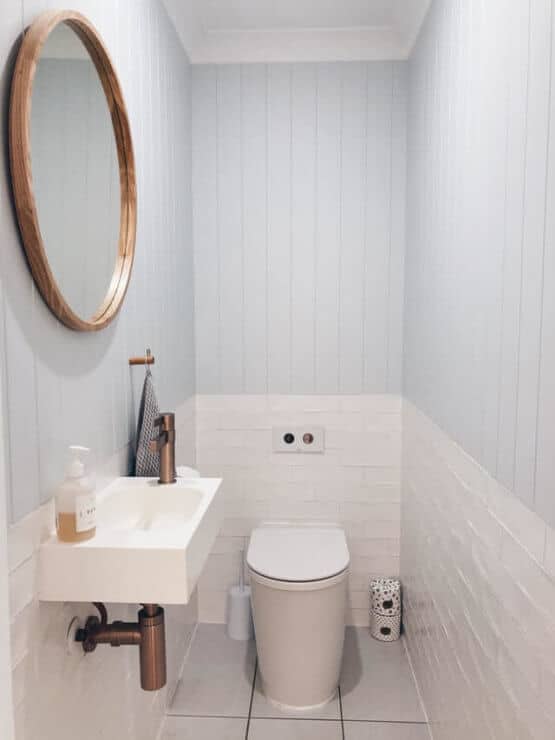Home toilets are meant to be sanitary and clean. This place is supposed to be the most hygienic place in your house. But not everything will always go as planned. Sometimes, you might even see yellow water in toilet!
Unfortunately, this problem isn’t rare. No matter how much you try to ensure the toilet is clean, you might still end up with colored water in the toilet. This might make your toilet resemble a public toilet, and no one wants that!
When this issue occurs, you might think that someone didn’t flush the toilet properly. While this could be a reason, if this happens frequently, chances are something is wrong in your toilet.
If you want to know what causes yellow water in toilet, you’re in the right spot. We’ll explain the most common causes, and let you know how you can fix them.
What Causes Yellow Water In Toilet?

Yellow water in toilet makes your toilet look dirty and unhygienic. However, the reasons behind it might have nothing to do with pee, despite the resemblance.
Here are the most common reasons behind this discoloration.
Minerals In Water
The water in our households isn’t as pure as we might think it to be. It contains plenty of minerals, such as magnesium and chloride. As long as these minerals aren’t in sufficient amount, there is nothing wrong with this, and they won’t cause you harm.
However, some of these minerals can build up on the walls of your pipes, especially if you’ve used them for a very long time. Once this build-up becomes too large, parts of it will wash away with the water every time you flush. [1]
This is the main cause behind yellow water in toilet.
On most occasions, this isn’t dangerous. It does, however, mean that it might be smart to conduct some repairs – but more on that a bit later.
Iron
Some households use iron pipes. These pipes can rust over time, and this rust will color your water. If you have in mind that most of these pipes were installed before the 1960s, this shouldn’t be a surprise. This is especially common with plumbing systems with old pipe fittings.[2]
When the water comes from the rusted fitting, it will be contaminated with tiny iron particles, causing discoloration. The discoloration caused by rust can range anywhere from dark brown to reddish-yellow.
This means that whenever you flush, you’ll mix fresh water with the iron from the rusted pipe. You might feel as there is no end to this issue!
Another option is that the water in your pipes simply contains too high iron levels, although this is rare with modern technology used in the sewer systems.
Rusted Bolts
If you have an old toilet bowl and notice yellow water in toilet, you might have rusted bolts. The rust from the bolts behaves in the same way as rust from the pipes, so there’s no need for too much explaining there.
Your toilet tank contains several bolts in the tank. These bolts are commonly made of iron, as this is a durable material that can withhold constant usage. Unfortunately, iron rusts and regular water exposure makes this happen somewhat fast.
When you flush, the water will pick up the rust from the bolts, but it usually won’t be enough to color it in some dark shade. Instead, the water will become yellow.
This is also a common culprit behind a nasty yellow stain in the toilet bowl. If you happen to have both of these combined, then iron is the likely cause.
How To Get Rid Of Yellow Water In Toilet

Let’s face it – No one wants to have discolored water in their toilet bowl! Not only does this make you squeamish, but you might end up explaining lots of things to your guests. Things such as yellow water, brown stain, or even worms in toilet, can cause a lot of discomfort – and rightfully so.
Fortunately, there are a few things you can do to get rid of this problem. Of course, the first step would be to identify what’s causing the issue. For every cause, there is a different solution, so you should play detective for a while.
If you’ve determined the cause and the location of the mineral deposit that’s coloring your water, it’s time for some action. Here’s what you can do:
Clean The Deposit
Sometimes, the deposit can be located in a place that is easy to reach, such as the tank or the sides of the toilet bowl. Be aware that if this is the cause and you haven’t dealt with it on time, you might have to learn how to unclog toilet pretty fast! This type of deposit can cause some nasty problems.
To remove the mineral deposit from inside the tank, you have to start by opening up the lid. See all the places where there is a mineral build-up. Then, simply remove everything with a brush or a scrubber. Once you’ve finished, flush twice to see if the water became clear.
If you have mineral build-up on the toilet’s sidewalls, you should use a toilet brush for cleaning. If you don’t have one, the toilet cleaner liquid might be of help, as well.
When you’ve cleaned this, flush several times, then look to see the color of the water. If this was the true reason behind yellow water in the toilet, everything should look sparkly clean now.
Clean The Rust
The rust can sometimes be inside the water tank of the toilet. If you have yellow water, this is a common culprit.
As we’ve mentioned before, this rust can sometimes develop on the tank’s bolts. This usually happens on all bolts at once, as they have all been exposed to the same amount of water regularly.
If this is the case, the solution is simple. Simply open the tank’s lid and start scrubbing away any rust that might be piled up on the bolts. To do this, try using a hard brush that can remove any deposits. Start cleaning by applying gentle pressure, as you can never know what might damage your toilet tank.
Keep in mind that removing rust from the bolts of the tank can be quite challenging. This is especially the case with very old bolts, which have rusted beyond recognition. If this happened to your tank, it might be wiser (and more affordable!) to simply buy new bolts and replace the old ones.
Get A New Fitting
As you might have noticed, removing rust from the bolts is fairly easy. If anything else, you can reach the problematic spot without any issues. However, if it’s the old pipe fittings that have rusted, you might have an issue.
Pipe fittings cannot be cleaned that easily. Instead, you would almost always have to replace them. Rusted pipe fittings can be a nasty problem and they can color your toilet water yellow in no time.
Before you do anything, try locating the exact spot of the rust. If you manage to find the rusted fitting, you will be able to replace it much faster. Still, this is something not many people can do by themselves. You should always contact a professional plumber who will do this for you.
Is Yellow Water In Toilet Dangerous?

Unlike water running from the faucets, no one uses the water in the toilet bowl for anything but flushing down when they’re done with their business. Despite this, you might still wonder if this colored water is dangerous and can it somehow harm your health or your plumbing.
Most water supply companies classify yellow water as ‘harmless’. This is because iron is the most common culprit behind it. Iron is an essential micronutrient and you can find it in a human’s organism. While too much iron can be dangerous, there is no way this could harm us from the bottom of the toilet bowl.
If yellow water is running from your faucets, as well, don’t drink it. Even though the chances of you being poisoned by iron are slim, there might be more bad minerals inside it that can harm you.
Also, yellow water on its own won’t ruin your toilet bowl. However, the cause of it – in other words, rust in the piping – might.
Mineral deposits can clog your toilet, or cause further damage to the pipes. On rare occasions, they can even lead to the bursting of the pipes, and this can cost you greatly.
Despite this, yellow water on its own isn’t harmful to your toilet.
Related: What Causes Toilet Bowl Ring
Conclusion
Having yellow water in toilet bowl can be a truly hideous sight. Fortunately, it usually doesn’t mean what you think it does.
Yellow water is usually caused by specific minerals in your water, or by the rust that’s falling off of some iron components – whether that be bolts or the pipes themselves.
No matter how much you flush or clean, you won’t get rid of the yellow water until you get rid of the culprit behind it. This usually means you have to find which part of the plumbing system has rusted.
Don’t hesitate to contact a plumber if you don’t think you’re fitted for this task. Also, don’t wait too long until you tackle this. Otherwise, you’re risking plumbing damage.
Read Next: How To Install Toilet

Michael Davis is a heating & plumbing expert who currently works as independent contractor in SC. He also writes for Plumbertip.
For almost 10 years he worked on various plumbing tasks across South Carolina.


